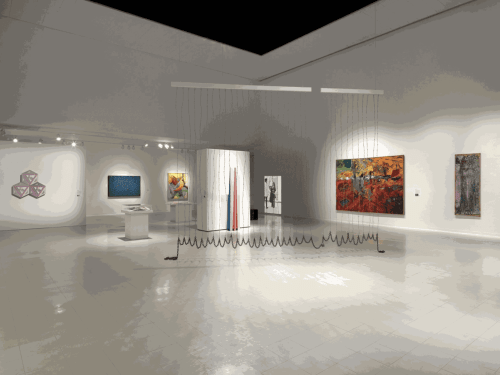In 1969 Stony Brook University was in dire straits. Having been rocked by anti-war protests, student demands for a Black studies program, and a drug raid on campus, the institution was under pressure to radically transform just over a decade after its founding. Amid these circumstances, the school invited British Guyanese artist Frank Bowling to curate an exhibition of works by Black artists, sponsored by a new “Afro-American Studies Program.” Bowling seized on the opportunity, later declaring that “young people clamoring for more and better Black studies” were its “natural audience.”
Bowling invited five African American artists—Melvin Edwards, Daniel LaRue Johnson, Al Loving, Jack Whitten, and William T. Williams—to join him in exhibiting work. The show’s title, “5+1,” gently set him apart as both the curator and the only non-American participant. Despite their disagreements about representational politics and their varying relationships with predominantly white gatekeeping institutions, the artists lamented the reigning expectation that Black artists should produce overtly political, figurative work. At the time, abstraction was often presumed to be the preserve of white artists with silver-spoon upbringings; prominent advocates like Clement Greenberg systematically overlooked Black artists. Bowling and his artists showcased their work at a time when major institutions were just beginning to work with Black artists, and they neither spoke directly to political questions of the day in the recognizable style of the Black Arts Movement (BAM) nor acted indifferent to the struggle to improve conditions for Black art. The exhibition demonstrated more indeterminate forms of expression to the same young students who were attending Black Students Union meetings, writing fiery op-eds, and participating in sit-ins.

